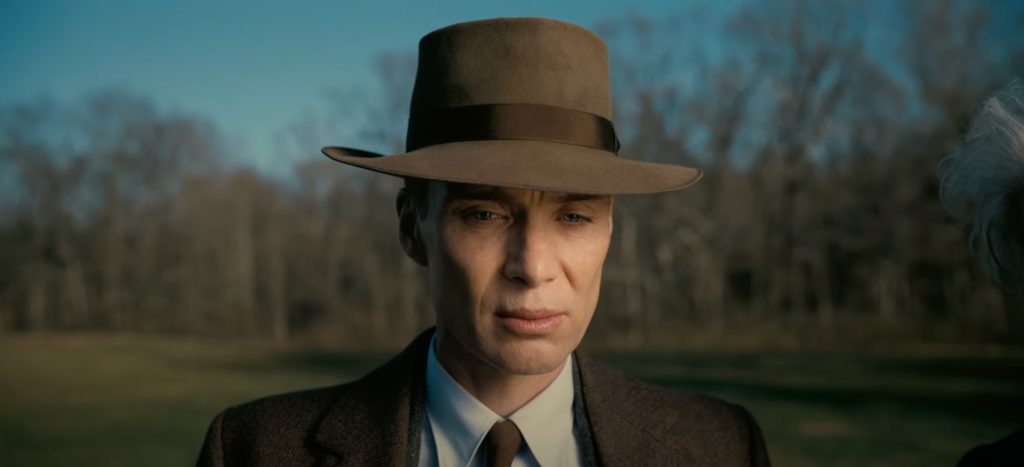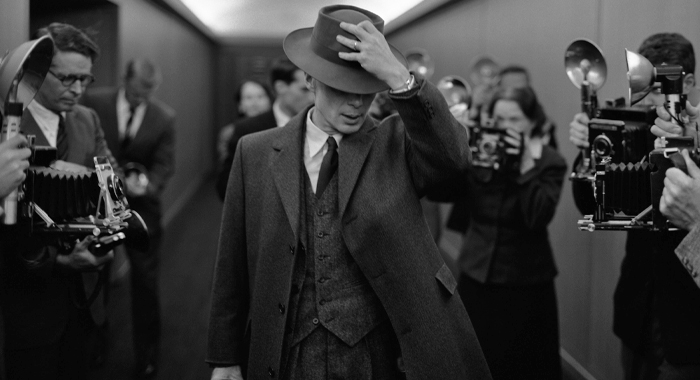Christopher Nolan is one of the few auteur directors working today that can bring in huge audience numbers whilst also making whatever the hell he wants to make in the way he envisions with huge budgets other filmmakers could only dream of. He’s also a director who, despite stylistically staying in his lane, has become somewhat unpredictable with the projects he takes on in recent years, and Oppenheimer is no exception, as this is the first film of his to be focused around a real person.
So, does Nolan hit the landing, or has he once again presented us with something as confusingly put together as Tenet?
Luckily, I’m glad to say that Nolan has delivered not just his best film in years but easily his most visceral film to date. What he has crafted with Oppenheimer is a true masterclass of filmmaking expertise in every single aspect. Despite its grand scale, especially being filmed entirely on 70mm IMAX, Nolan manages to make the majority of this film feel personal and, to an extent, intimate with how it examines Oppenheimer’s life and him as a person. The film leaves no stone unturned through its dense 3-hour runtime, picking apart every piece of his life, from his travels across Europe to the creation of the atomic bomb and the toll that would forever take on him.
The film relies heavily on its dialogue and the intense relationships some of the characters share with one another. Now for a film of this length to be entirely dialogue driven with not a single action set piece in sight will be a major turn-off for most people, but thankfully Nolan keeps this whole thing running like a constantly chugging train. The script is genuinely engaging from start to finish and makes every scene in the film feel just as important and tense as the last one. This is all strengthened by Jennifer Lame’s immaculate editing, which trims away all of the unnecessary fat and consistently keeps the film moving at a rapid pace throughout the entirety of its runtime.

What also elevates the film’s dialogue and subject matter is the cast, who are great across the board. Cillian Murphy gives a career-best performance as J. Robert Oppenheimer, saying so much with very little. Murphy’s thousand-yard stare mesmerises and haunts every single frame of the film, truly encapsulating the torment and horror behind his eyes. Robert Downey Jr. also captivates with his best performance in years, reminding everyone just how amazing of an actor he can be. He adds a lot of needed intensity to his portrayal of Lewis Strauss which really comes into its own during the final hour of the film.
The cast is crammed with big names, some of whom only get two or three minutes of screen time, yet all leave their own unique mark on the film in some shape or form. Emily Blunt, Matt Damon, Florence Pugh and Benny Safdie all work wonders in the scenes they’re in, but even actors like Rami Malek, Alden Ehrenreich and Jason Clarke give their limited appearances just as much passion and personality as everyone else.
The way in which the story of Oppenheimer is told also greatly benefits from Hoyte Van Hoytema’s gorgeous cinematography and Ludwig Göransson’s beautiful score, both working with each other to heighten the experience of the film in their own brilliant ways. Hoytema’s camerawork is just as stunning as ever but, as previously mentioned, feels more intimate than any of his previous collaborations with Nolan. The way in which the IMAX cameras feel as if they’re invading the personal space of these characters, even during the simplest of conversational scenes, adds a certain sense of foreboding and weight to every word uttered by the actors, especially during some of the more extensive dialogue-driven scenes. Even the sporadic use of abstract visuals and optical effects are hypnotic to see on the big screen and further emphasise the inner workings of Oppenheimer’s mind as he sees everything.
However, all of this wouldn’t pack as much of a punch as it does if it wasn’t for the truly incendiary sound design, which shines at the film’s peak during the trinity test scene. There is also Göransson’s score which works in unison with Lame’s editing to propel the film forward, even during its quieter moments. The music here works so well that it genuinely acts like the film’s core DNA holding everything together. Obviously, the direction, cast, cinematography and visual effects are all sublime, but the driving nature of the film’s score gives all of these other components the rhythmic backbone on which it all operates.
Nolan, this time, pulls back on the action and instead focuses primarily on telling the story of this fascinating and troubled individual in an unforgiving and honest manner. The end result is his most human film in a long, long time that still manages to hit hard in the visually bombastic way we expect from him. You will, without a doubt, feel that 3-hour runtime, but not a single minute of that time is wasted, and by the end, it will have you feeling emotionally drained and left in awe of what you’ve just witnessed.








